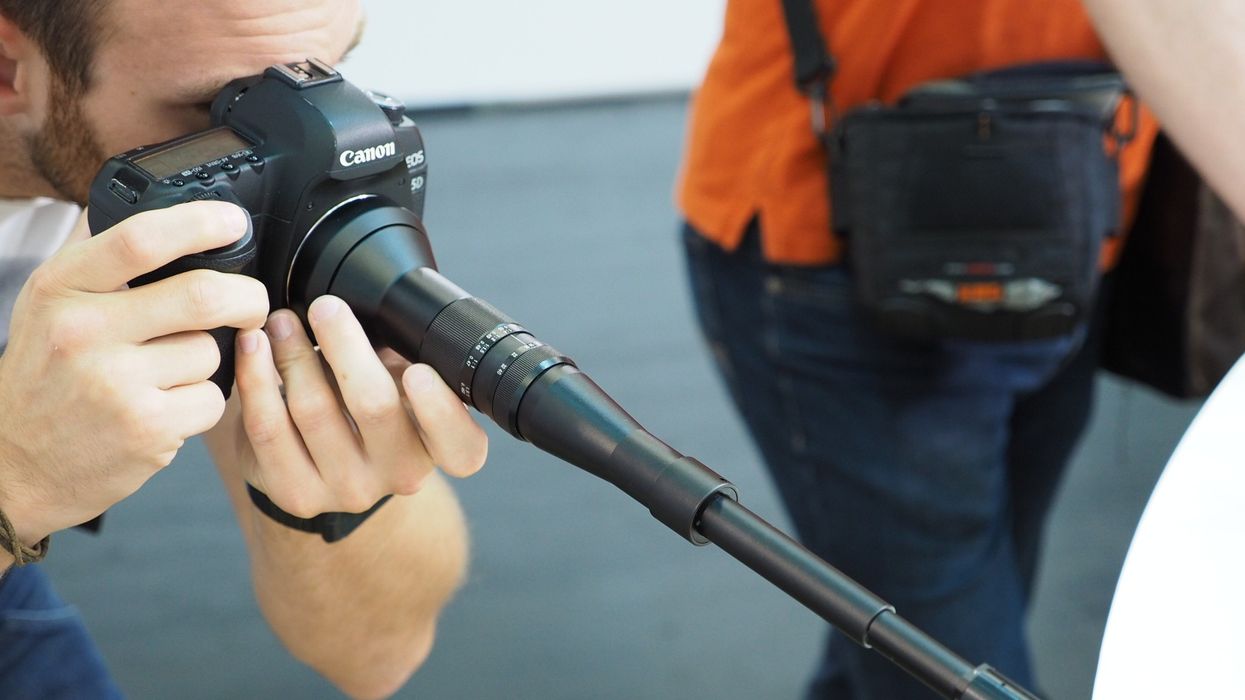Venus Optics Teases a Very Different Macro Lens
Venus Optics showed off the new 24mm macro design that should let you get very close to very small things.

Venus Optics, which also markets some lenses under the Laowa brand name, showed off a new macro lens at Photokina this year: the 24mm f/14 2x Replay.
The 2x, sometimes also referred to as 2:1, refers to the intensity of the macro power of the lens—in terms of the relationship to the object being photographed in reality, versus the size of the object on the image sensor. In normal photography, objects are much larger in front of the lens than they are on the sensor. (Your 6-foot-tall actor is less than an inch tall on the image plane.) Macro photography, on the other hand, is when the size of the object in the scene appears close to its size on the sensor; the intensity of the macro power is often discussed in terms of that ratio.
Venus Optics has a good history of making interesting lenses available at affordable prices.
With a 2:1/2x Macro, the size of the object is doubled on the image plane, meaning an object the size of an American dime (17.91mm) could be photographed to fill nearly the entire frame of your Full Frame 35mm imager (36mm across, or just slightly more than twice as wide as a dime). This allows for amazingly detailed close-ups of very small objects. (If you are thinking of insects, Venus Optics claims one of the benefits of their long tube macro design is specifically in working with "shy" creatures.)

You aren't imagining the F-stop in the above photo—indeed, it shows a maximum aperture of 14. That's an 11/16 split, or a very, very slow widest aperture.
However, while there are some macros that open fairly wide (we're looking at you, T2 Arri Master Macro), many macro designs, particularly those that are this powerful, do end up sacrificing a wide aperture. And considering that the depth of field gets smaller as your focus distance gets shorter, this aperture will give you at least a fighting chance of having something in focus as you try and photograph an ant carrying a piece of a leaf.
The flip side of this maximum aperture is that low light photography is much harder. This is generally less of a problem for still photographers, since, if necessary, they can extend their exposure time in order to compensate for a lack of light. Filmmakers will either have to pour light on their subject (easier since the subject is small, but too much light could affect delicate scenes, such as a wilting a flower or melting ice crystals), or compensate with higher ISO settings. Of course, filmmakers can also extend their capture time, but beyond 1/24 of a second, this will change the way motion plays: shooting 6fps at 1/6 will give you 4x more light than 1/24, but the motion will play back sped up.
The lens price is yet to be announced but will be available in early 2017, and Venus Optics has a good history of making interesting lenses available at affordable prices.
Tech specs
- 2:1 (2x) Macro
- f/14 maximum aperture
- Canon and Nikon mount available
- Full Frame (36mmx24mm) image coverage
Thanks to ePhotoZine.











